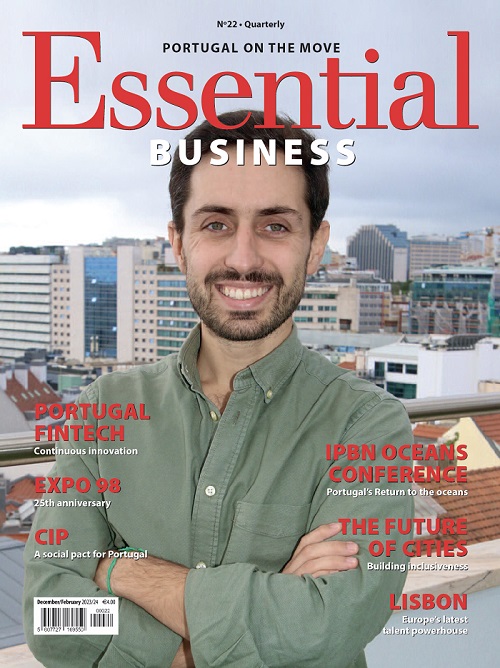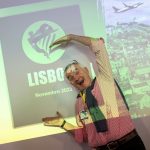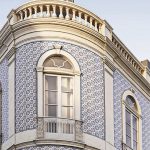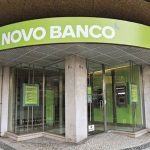António Cardoso e Cunha: The man who dared to dream big
“António Cardoso e Cunha (1933–2021), politician, was the first Portuguese nominated as a European Commissioner, as well as a minister, member of parliament, and commissioner of Expo-98. Died on 25 January of undisclosed causes.”
Thus did Expresso, Portugal’s leading weekly newspaper, record the death of Antonio Cardoso e Cunha. The obituary, such as it was, came after descriptions of the lives of convicted killer Phil Spector, the TV interviewer Larry King and the Benfica football trainer John Mortimore. Below it came Rosalina Machado, the former director of the Ogilvy advertising agency.
The city of Lisbon and indeed the whole of Portugal owe António better recognition than this brief note. What he achieved in his five years as commissioner for Expo-98 deserves to be remembered. At the time of his resignation in 1997, a little more than a year before the exhibition was due to open, he said that he deserved a statue in his honour, and the arrogance behind that remark was one of the factors that led to his undoing. But his contribution to Lisbon should not be forgotten.
When it was announced in 1992 that Lisbon had been chosen as the venue for the next world fair, there were no plans available of what should be built on the proposed site at the extreme eastern end of Lisbon. At the Improvement of Lisbon conference in early 1992 the east of Lisbon was not even mentioned as one of the three priority areas for redevelopment. The designated 30-hectare site around the former flying boat dock at Vila do Bispo on the River Tagus was shown edged in red. That was all.
The then prime minister Aníbal Cavaco Silva chose António to lead the project at a time when his government was already under attack because of overspending on other large building projects such as the Belem Cultural Centre and the head office of the state-owned Caixa Geral de Depósitos bank. Cavaco Silva appointed a politician who was willing to override anyone who objected to the government’s plans.
Money was always going to be an issue and António was clear that the Expo needed to be at least in part self-financing. He saw an opportunity for the government to make money from Expo by its becoming a real estate developer. He asked that the Expo area be extended to 300 hectares to include all the land around the dock between the river and the railway, right up to the edge of the heavily polluted River Trancão.
Cavaco Silva agreed to this idea and the whole government took on the proposed development as its own. Indeed the concept of regenerating an important, rundown area of Lisbon and linking it to the rest of the city became one of the primary purposes of Expo-98. He also agreed to grant Expo the power compulsorily to acquire all the land within the site, and then to parcel up and sell plots of land and to grant all the necessary planning permissions and building licences. He took away these powers from the local authorities, and also their power to delay the project or private building on the site.
The major issue initially was that there had previously been an oil refinery on the site and much of it was still occupied by oil tanks and rubbish dumps. The soil was contaminated and needed to be removed. Also, the eastern edge of Lisbon had no road links either to the rest of Lisbon or to the rest of the country. The site was cut off by the railway and there was only access at the western end.
António did however have a few advantages besides his political connections with Cavaco Silva and inside the ruling PSD party. The Expo team spent a lot of time at Expo-92 in Seville. They saw that the fair itself was a great success, but that once the fair was over, little remained to show where it had been. The pavilions and the accommodation built for visitors were all taken down and sold off.
António decided that all the buildings erected for Expo-98 would be permanent and that the brief for architects should specify where possible the planned long-term use of the building. Secondly, although the buildings within the 30 ha exhibition site would be developed mostly by Expo-98 itself, all the buildings on the remaining 300 ha (except for the new train station) would be designed and developed by private enterprise.
After some initial objections, a masterplan for the layout of the whole redevelopment area was approved. It was decided that the area would be built with a modern underground infrastructure which included telecommunication systems, the delivery of steam to all buildings and a suction system for the removal of waste.
António faced innumerable difficulties but he always remained positive. Properly clearing the site and laying solid foundations was more difficult than expected and the estimated construction costs started to rise sharply. The weather didn’t help as the winter rainfall in 1996 and 1997 was unusually heavy. Secondly, many of the infrastructure works, such as the new road, rail and metro links, were due to be built by third parties and neither the cost nor the timing were within his or Expo’s control.
Thirdly, in 1995 the political climate changed. The PSD lost the election and António Guterres became prime minister at the head of a Socialist (PS) government. Joao Cravinho, the new Minister of Public Works, described Expo as a fatal inheritance and promised to do everything he could to ensure that the Portuguese did not have to pay an excessive bill as a result of Expo.
António was liked and respected by all those who came into contact with him. He was doing well in selling the project to the people of Portugal and steering a steady course through the political minefield which surrounds state enterprises in Portugal. But once the PS became the ruling party, it became “impossible for me to maintain,” António wrote later in his resignation letter, “the political neutrality of the project… I have found myself trying to contribute to the success of what everyone agrees is an important national project in the face of a clear lack of confidence in me and the open expression of lack of trust.”
The new city in the East of Lisbon
Looking back now, 23 years after Expo-98, we have to recognise the enormous success of the whole regeneration project. After initial scepticism developers flocked to Expo to build their projects. Around 25,000 people now live in the Parque das Nações, and the offices there are popular with tenants and investors. The whole area between the centre of Lisbon and its eastern edge has been revitalised. The transport links now mean that by road, subway and rail one can easily travel between the Parque and the rest of Lisbon and Portugal. A new bridge across the River Tagus links the area to the Alentejo and the Algarve regions. There are now seven links to the site under and over the railway. The whole area and the River Trancão are now free from pollution.
Some of the best modern buildings in Portugal are in the Parque. Visitors come to the Oceanarium, the Arena, and to the trade fairs centre Lisbon International Fair (FIL). The river has been given back to the city, and where there were once oil tanks, containers and piles of scrap there are now riverside parks, walks and a cable car.
Some of the buildings have not weathered so well. Two of the most flamboyant designs, the Oriente station, with its concrete trees, designed by Santiago Calatrava and the Expo’s Pavilion of Portugal, with its hanging concrete canopy, designed by Siza Vieira, cost much too much. Neither have been used as hoped. The station was meant to be the terminus of the line from Porto, but it is now just an extra stop on the way. After many failed attempts to find a long term use for the Pavilion, it is now due to be converted for use by the University of Lisbon.
But the whole Parque is still shown to visitors as an example of successful urban planning, and it shows what can be achieved on the back of an international fair. António dared to dream big and lived to see his dream come true. As Cavaco Silva wrote after his death: “There is no doubt that the success of Expo as well as the urban revolution which totally changed the layout and character of the East End of the city were primarily due to the vision, the courage and the outstanding ability for organisation of António Cardoso e Cunha.”
The only pity is that he was ahead of his contemporaries in terms of his imagination and drive, and he was not willing to bend and pay court to his new political masters. Perhaps by the time of the 50th anniversary of Expo in 2048 he will get his statue.










